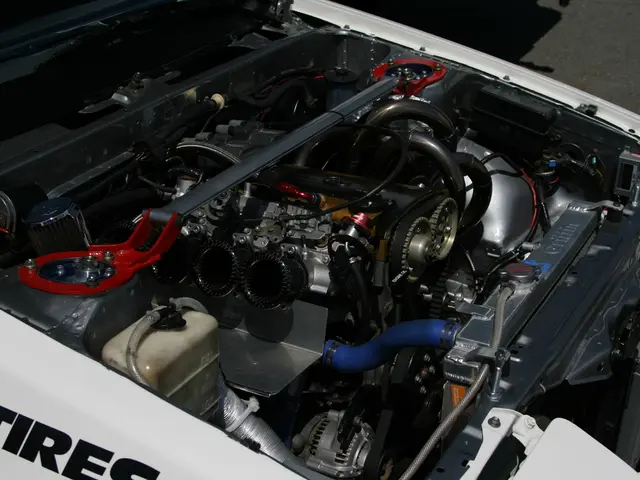UK's massive £66B overhaul in transportation via automation
Connected and Automated Mobility (CAM), a revolutionary technology, is set to reshape the UK's transportation sector. This innovation encompasses self-driving vehicles, automated passenger services, and automated delivery vehicles, among others.
The UK automotive sector has been a frontrunner in this technological advancement, investing over £600 million in more than 100 CAM projects since 2015. This investment has not only fostered homegrown CAM capabilities but also bolstered the development of technology developers and component suppliers within the UK.
Existing connectivity in most new cars and vans allows for the rollout of services like infotainment and fleet management. Future expectations include vehicle-to-vehicle and vehicle-to-infrastructure communication services, which promise to revolutionise the way vehicles interact and operate.
The UK government has also been a significant investor, putting around £600 million into more than 100 projects in the area of connected and autonomous driving since 2015. This investment is expected to create an additional 342,000 jobs by 2040.
The potential for CAM to save 3,900 lives and prevent 60,000 serious accidents by 2040 is a significant benefit. With enhanced safety features and automated driving capabilities, CAM offers a greener, safer, and more efficient future for the UK's transportation landscape.
Automated Lane Keeping Systems are already available in some markets for passenger cars, and the commercial deployment of "driverless" services on British roads is pending necessary regulatory reforms. The government predicts that 40% of new cars could have automated driving capabilities by 2035.
Adoption of CAM is expected to begin in earnest in the latter half of this decade. Automated delivery vehicles are expected to enhance urban and last-mile goods deliveries, while automated passenger services like pods, shuttles, and robotaxis offer on-demand ride-hailing or scheduled services.
Widespread commercial adoption of CAM is anticipated by the end of the 2030s. However, the SMMT report highlights the necessity for government interventions such as regulatory reforms, funding support, skills development, and public communications programs to realise the socio-economic benefits of CAM.
In conclusion, CAM is not solely a technological advancement; it's a socio-economic catalyst with the potential for enhanced safety, efficiency, and a greener future for the UK's transportation landscape. As we move towards the era of Connected and Automated Mobility, the UK is poised to lead the way in this transformative technology.







